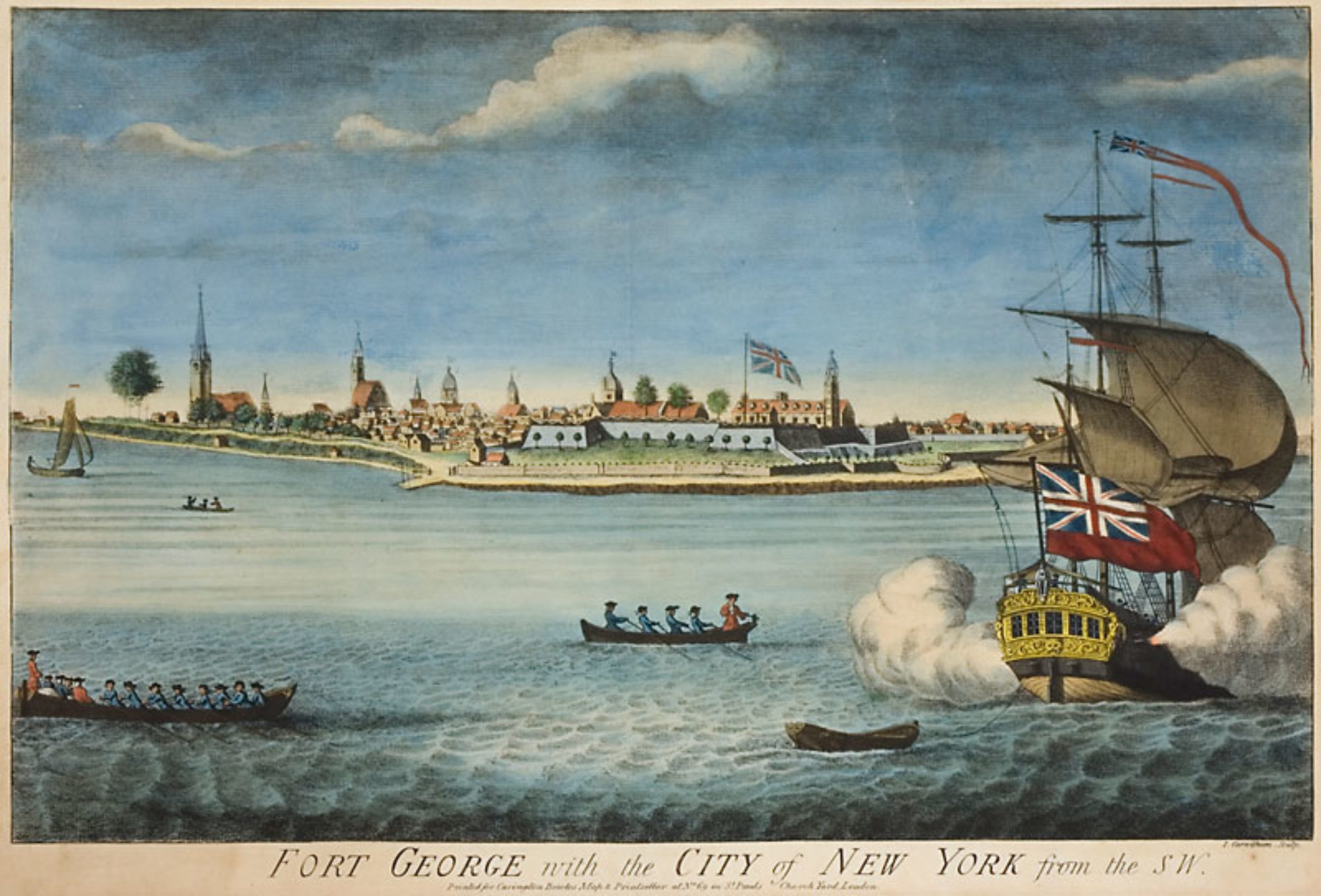Lieutenant Colonel Edward Vaughn Dongan, commander of the 3rd Battalion of New Jersey Volunteers in Skinner’s Loyalist brigade was mortally wounded in a skirmish, midway between the Old Blazing Star Ferry and Prince’s Bay. He was taken to a local farm (which I have yet to identify). It may very well be The Abraham Manee Farmhouse in Prince’s Bay, where British redoubts have been discovered nearby.

Edward Vaughan Dongan was born January 3, 1749. After his father’s death, he went with his mother to live in Elizabeth. He was brought up a lawyer and lived at New Brunswick, N. J., where he married a daughter of Squire La Grange, a lawyer of that place. On the outbreak of the revolution, he made himself obnoxious on account of his adherence to royalty and was driven from his home before the British landed in New York. His father-in-law and family were in sympathy with him, and their estate was afterward forfeited.
Lt. Col. Edward Vaughan Dongan, along with Major Robert Drummond of the 3rd Battalion New Jersey Volunteers, had participated in Loyalist Foraging Raids into the New Jersey countryside from the Winter and early Spring of 1777. They successfully captured prisoners and livestock in one Foraging Raid into New Jersey from Staten Island on August 19, 1777.
It was now known that the rebels on this side had gone off towards Richmond; they were eagerly pursued, and on the road beyond that village an account was received from Lieutenant-Colonel Dongan, that his post had been attacked by the second division of the enemy, and obliged to retire, (which they did with very little loss,) towards Lieutenant-Colonel Allen, who had himself very seasonably retired, and taken post on a height near Prince’s Bay, where Lieutenant-Colonel Dongan had joined him. A large body of the rebels had twice made a show of attacking them, but finally declined it, and marched off towards the Old Blazing Star. Those two gallant officers soon determined to pursue them, and now gave information to Brigadier-General Skinner that they were on the way and requested orders which were immediately despatched to them, to proceed, and at all events to attack the enemy as soon as possible, informing them at the same time, that their brother volunteers from the right were coming up with all speed to join them, and that the regular troops, with General Campbell, were at hand to support them. These orders were executed with equal spirit and success. Notwithstanding a great disparity of numbers, these new troops attacked the rear of the enemy, consisting of Smallwood’s and other corps that are foremost in reputation among the rebels, with an intrepidity and perseverance that would have done honor to veterans. A considerable number of the enemy were killed, and about three hundred taken prisoners, including twenty-one officers, viz., one lieutenant colonel, three majors, two captains, ten lieutenants, three ensigns, one surgeon, and one officer wounded. By this time, General Campbell had got up one piece of cannon with a detachment of the artillery. That piece was soon followed by two or three more, and a well-directed fire of round and grape shot had a great effect on the rebel boats, and on those of their people who had got over to the Jersey shore. Our loss, in the whole affair, is five killed, seven wounded, and eighty-four missing. Among the wounded were Lieutenant-Colonel Dongan1 and Major Barnes, both officers of distinguished bravery.
The rebels, by this attempt, have, indeed, got a good deal of plunder, chiefly from the inhabitants, of which they may possibly be ready to boast, for they have often boasted of exploits which honest men would deem a disgrace; and they have reason on this occasion to blush for their conduct.
Lieutenant-Colonel Edward Vaughan Dongan died of his wounds soon after the action. He was the commandant of the third battalion of New Jersey Volunteers; the youngest son of Walter Dongan, Esq., late of Staten Island; was bred to the law, and supported a most amiable character. He was in his twenty-ninth year and left a young distressed widow to lament the death of an affectionate husband. Their only child died a few hours before him.
‘Gaine’s Mercury, September 1. * In New Jersey.
_____________
Excerpts from: Frank Moore, Diary of the American Revolution: From Newspapers and Original Documents, Volume 1, C. Scribner, 1860.
______________________________________________________________







You must be logged in to post a comment.